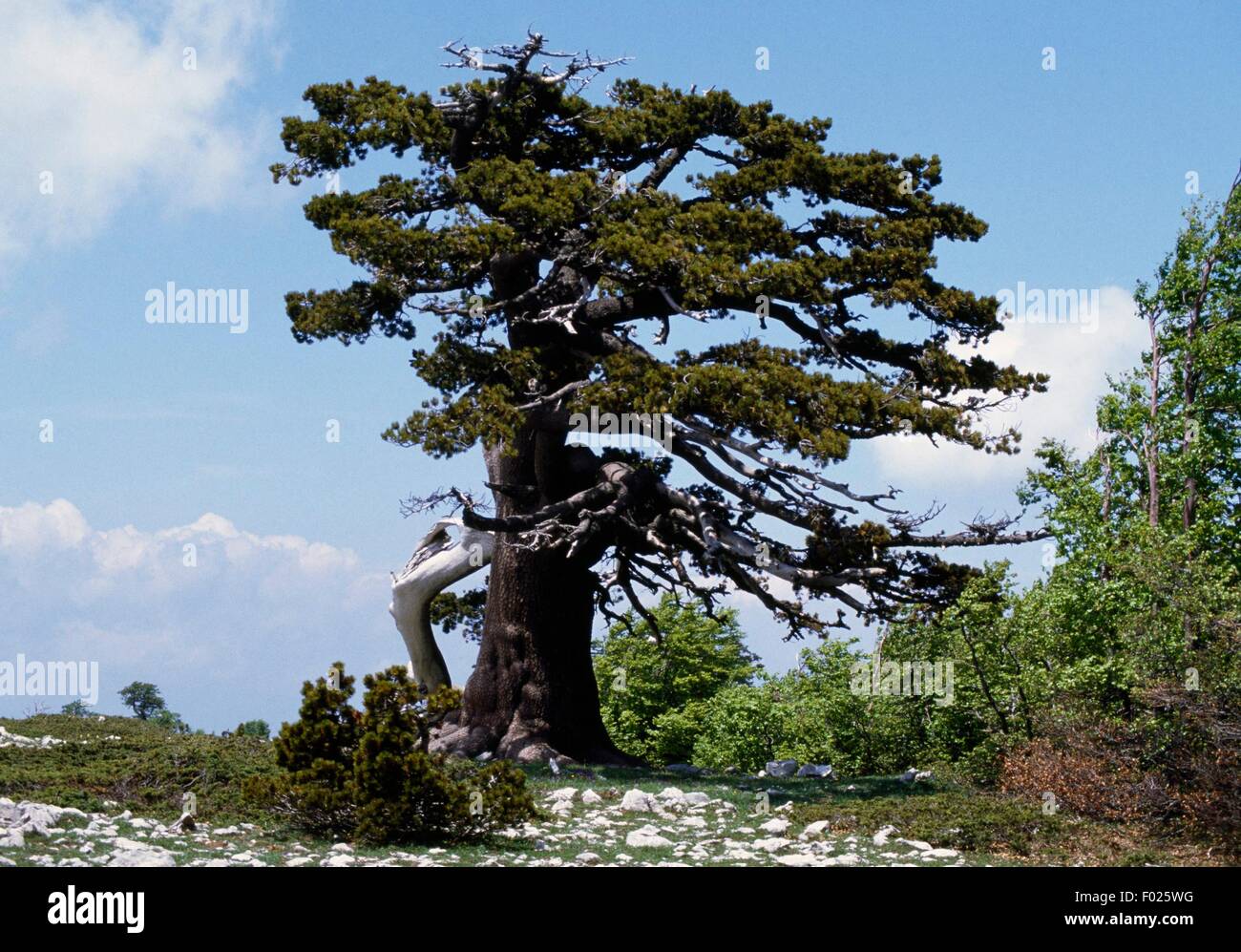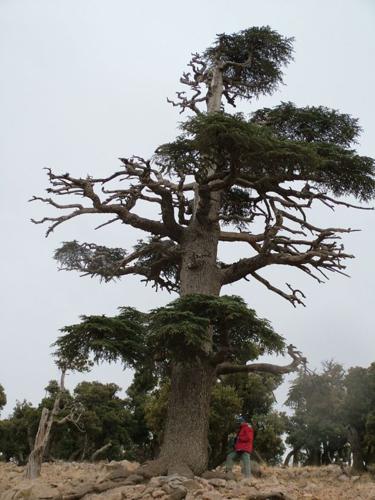A group of botanists and dendrochronologists from the University of Arizona, Stockholm University, and the University of Mainz have determined that a pine tree in the Pindos Mountains of northern Greece is at least 1,075 years old, which makes it one of the oldest living trees in Europe.

Adonis, a 1,075-year-old Bosnian pine. Image credit: Oliver Konter.
“This old tree has really stood the test of time in such a harsh environment,” said team leader Dr. Paul Krusic, of Stockholm University.
“There are over a dozen trees nearly as old, living in a forest high in the Pindos Mountains.”
“We study these ancient trees to learn about how the climate has changed over the centuries,” he said.
Considering where Adonis grew up, and how long it’s been alive, Dr. Krusic and his team named this specimen after the Greek god of beauty and desire.
“To figure out Adonis’s age, we took a sample of wood from the outer part of the trunk to the center,” they said.
“Adonis’s core is 3.3 feet (1 m) long and has 1,075 growth rings.”

The researchers hope the annual variations of the tree rings from trees like Adonis and those fallen in centuries past, yet still preserved on the ground, will provide an informative history of climatic and environmental conditions, going back thousands of years.

”I am impressed, in the context of western civilization, all the human history that has surrounded this tree; all the empires, the Byzantine, the Ottoman, all the people living in this region,” Dr. Krusic said.
“So many things could have led to its demise. Fortunately, this forest has been basically untouched for over a thousand years.”
According to botanists, the Bosnian pine (Pinus heldreichii) is a montane to subalpine evergreen tree species. It is native to dry limestone soils in mountain areas of the Balkans, Italy and Greece.

Also known as the Heldreich’s pine, the species was first described in 1863 by the Swiss botanist K. Hermann Christ from specimens collected on Mount Olympus, Greece.
Bosnian pine reaches a height of 66-115 feet (20-35 m) and a diameter of 5 feet (1.5 m). The tree is very frost-hardy.

The bark is very thick, ash-gray, flaking to leave yellow patches, breaking into large plates. The branches are whorled, upward-curving,
The leaves are in fascicles of two, 2.4-4.3 inches (6-11 cm) long, about 0.06 inches (1.5 mm) thick, stiff, sharp, green, in whorls about twigs.
The buds are brown, not resinous, 0.6 inches (1.5 cm) in diameter. The pollen cones are bright yellow, in dense clusters at the base of the shoot.
The seed cones are in clusters of two-four on short peduncles, 2.8-3.5 inches (7-9 cm) long and one inch (2.5 cm) wide with a flat base and thin, weak scales, opening when ripe.
The seeds are grey, 0.2-0.28 inches (5-7 mm) long with a 1-1.2 inches (2.5-3 cm) long wing. Seed production begins at 15–20 years of age, typical of pines.
Bosnian pine flowers from May to June, cones ripening in September and October of the second year.
The species is not an important timber tree, although it is planted in some Balkan countries with timber production as an objective.
The wood is used for heavy construction or as round timber, e.g. for poles, and to build traditional fences.
Its main value is as an ornamental tree and it is fairly widely cultivated for this purpose.